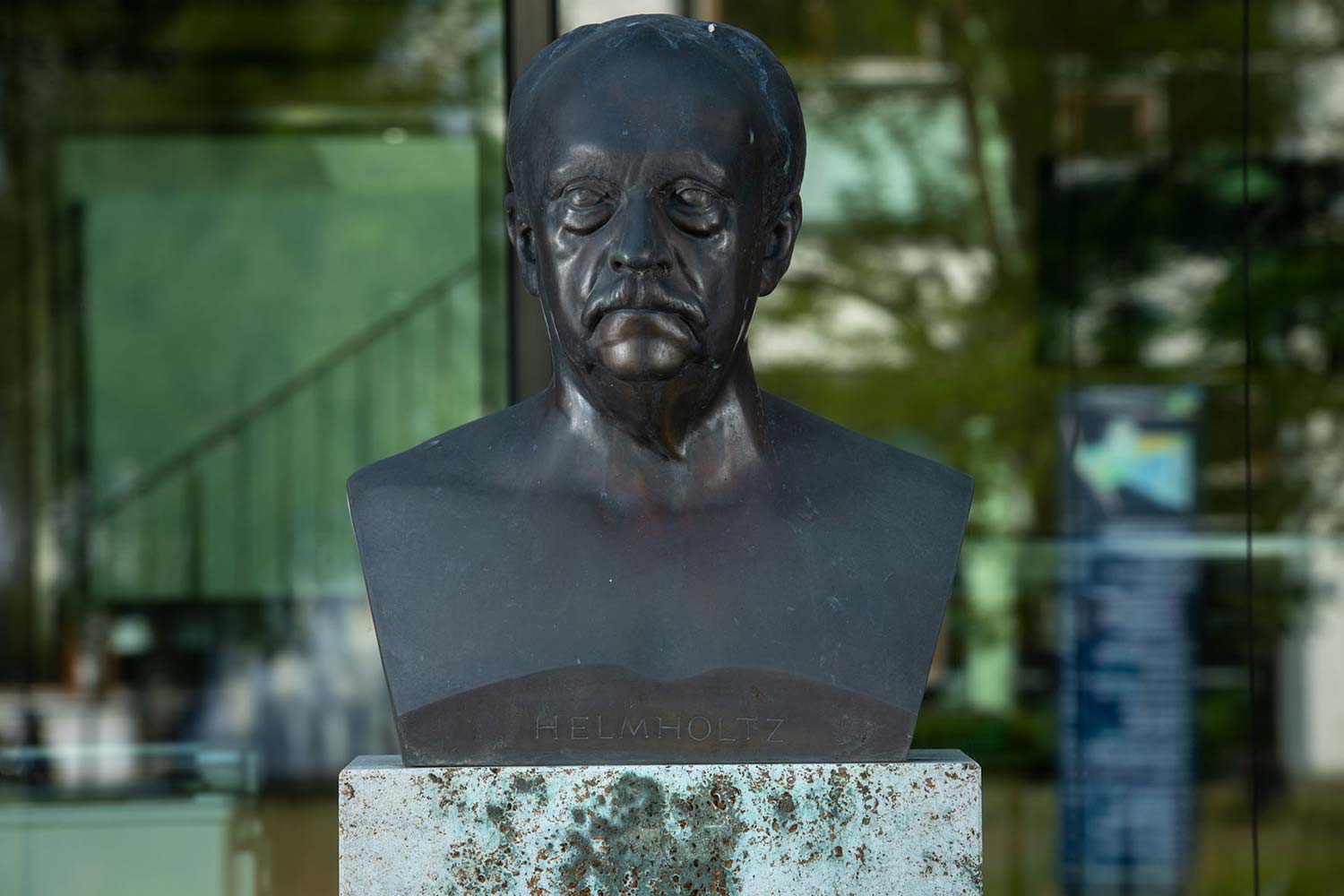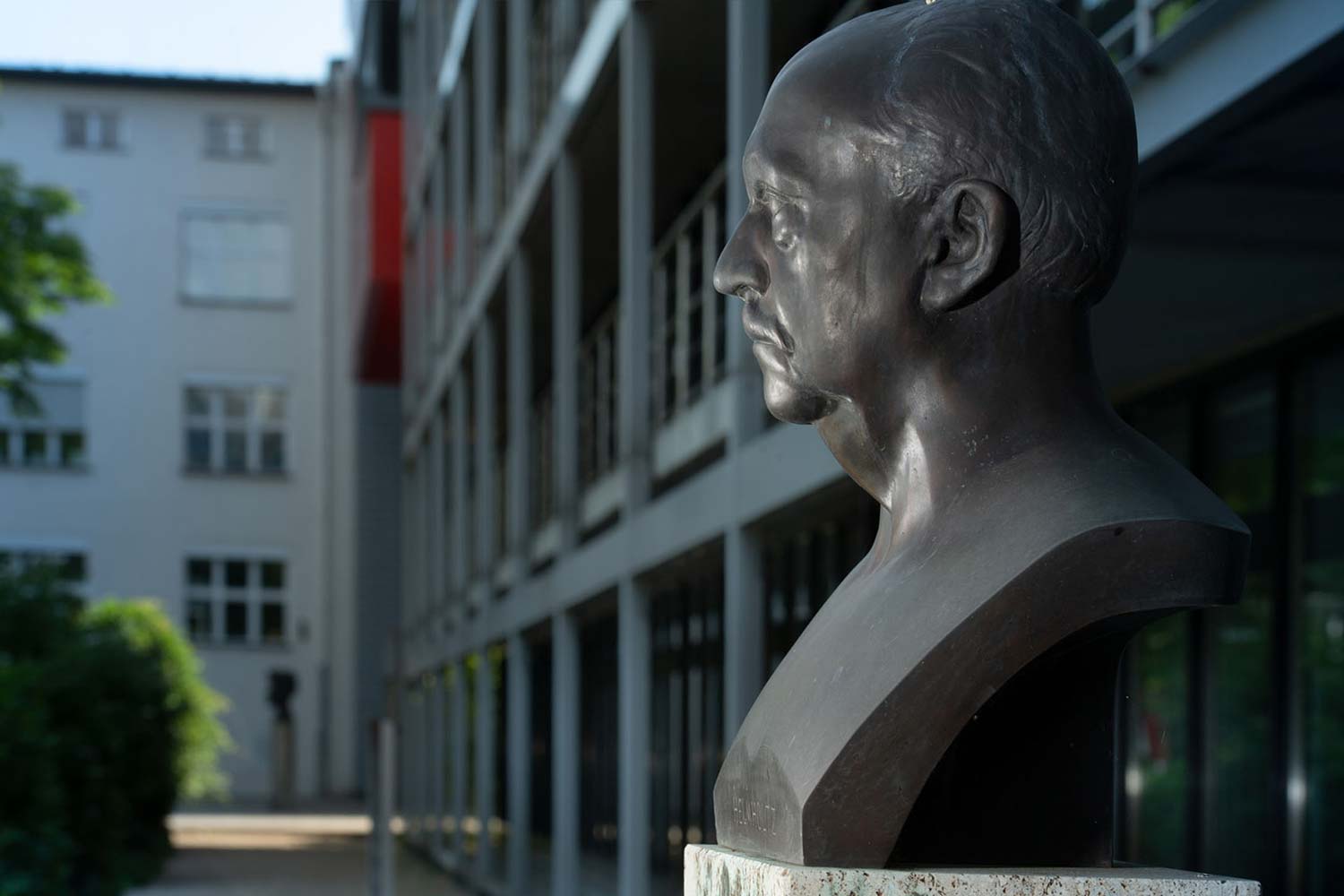8Hermann von Helmholtz
August 31, 1821 in Potsdam –
September 8, 1894 in Berlin

Hermann von Helmholtz was a polymath who was so influential and well-known during his lifetime that he was called the ”Chancellor of Physics“, a reference to German Chancellor Otto von Bismarck.
He was born in Potsdam on August 31, 1821 with the name Hermann Helmholtz – the “von” came with his knighthood, in 1882. In 1838 Helmholtz began his studies at the medical-surgical Friedrich-Wilhelm-Institute, a so-called ”Pépinière“, a military medical academy. Alongside the Charité, it served as the second surgical school in Berlin. He was a student of Johannes Müller and received his doctorate in 1842 for a thesis on the comparative anatomy of the nervous system of insects, crabs and other invertebrates. Helmholtz performed his military service then took up a teaching position in anatomy at the Berlin Art Academy in 1848, upon the recommendation of Alexander von Humboldt. A mere one year later he was appointed to the Chair of Anatomy and Physiology in Königsberg, then in 1855 to the Chair of the same name in Bonn. In 1858 the University of Heidelberg appointed him to the Chair of Physiology, then Helmholtz received a call from the Friedrich-Wilhelms-University of Berlin to take up the Chair of Physics. Helmholtz remained in Berlin until his death. In 1887 he became the first president of the newly founded Physical-Technical Reich Institute in Charlottenburg.

Helmholtz made contributions to numerous scientific disciplines throughout his lifetime. Among the subjects of his work were questions of energy in chemical reactions and in living beings; he formulated the law of conservation of energy. In theoretical physics, he made contributions to hydrodynamics and electrodynamics. In mathematics his focus was problems of geometry. As a physician, he carried out the first precise measurements of the speed of conduction in nerves and studied the physiology of hearing and vision. He developed the resonance theory of hearing, which states that the fibers of the basilar membrane in the ear are triggered to resonate by waves with the same natural oscillation period as the fibers. Helmholtz developed the three-color theory for perception in the human eye, which states that any color can be obtained by mixing light consisting of three primary colors. He proposed that there are three types of receptors in the eye, each of which responds to one of the primary colors. Helmholtz designed a number of instruments for his research. These included the Helmholtz resonator, a device to analyze sound, and the ophthalmometer, to measure the curvature of the cornea. Helmholtz described the ophthalmoscope, an instrument to examine the retina at the back of the eye, as his ”most important invention“.
The influence of his work extends far beyond the examples mentioned here. In honor of his great breadth of activity and his many findings, the Helmholtz-Association of German Research Centers bears his name.
Kopie einer Skulptur von Adolf v. Hildebrandt, Bronze, 1897